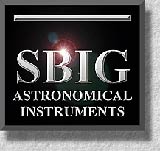NGC 1275 was one of William Herschel's discoveries; he found it on October 17, 1786. John Herschel included it in the GC from observations of d'Arrest and apparently never observed it himself.
It is the dominant member of the Perseus Cluster of Galaxies and a strong radio source, therefore named Perseus A, and 3C 84 from its entry in the 3rd Cambridge Catalogue of Radio Sources. It is also a strong X-ray source. Its nucleus shows emission lines and is of Seyfert type 1 - this galaxy was in Carl Seyfert's original list of galaxies with peculiar emission lines in their nucleus, now called Seyfert galaxies. Filaments of gaseous material are moving explosively outward at 1500 miles per second.
From APOD on Perseus Cluster of Galaxies:
Explanation: Here is one of the largest objects that anyone will ever see on the sky. Each of these fuzzy blobs is a galaxy, together making up the Perseus Cluster, one of the closest clusters of galaxies. The cluster is seen through a foreground of faint stars in our own Milky Way Galaxy. Near the cluster center, roughly 250 million light-years away, is the cluster's dominant galaxy NGC 1275, seen above as a large galaxy on the image left. A prodigious source of x-rays and radio emission, NGC 1275 accretes matter as gas and galaxies fall into it. The Perseus Cluster of Galaxies, also cataloged as Abell 426, is part of the Pisces-Perseus supercluster spanning over 15 degrees and containing over 1,000 galaxies. At the distance of NGC 1275, this view covers about 15 million light-years.






